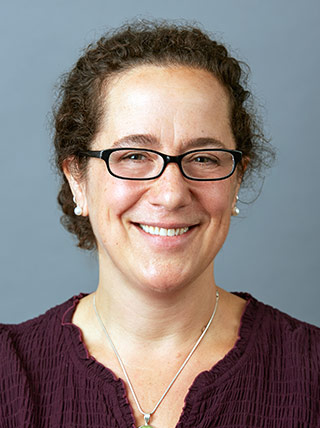
Kaiser Permanente Center for Health Research Senior Investigator Rachel Gold’s commentary in JAMA reinforces need to remove barriers to social risk screening
Across the country, there is growing momentum within the health care industry to understand how social, behavioral, and economic factors can affect patient’s health outcomes, including their ability to access care or follow up on treatments. Identifying and addressing factors such as a lack of secure housing, food, transportation, or other basic needs, known as social determinants of health (SDH), can result in better health for patients and lower health care costs overall.
 Rachel Gold, PhD, MPH
Rachel Gold, PhD, MPH
Although health care leaders recognize the need to assess patients’ SDH, a recent study in the Journal of the American Medical Association (JAMA) found that fewer than a quarter of hospitals and 16% of physician practices actually screen patients for their social needs.
Hospitals and practices cited a lack of financial resources, time, staffing, and lack of incentives as major barriers to screening patients. In addition, the study suggests another barrier is a lack of understanding on the part of providers as to how to help patients deal with their social needs. Health care providers may hesitate to adopt screening practices out of concern that it would be difficult to address the social issues a patient is experiencing.
In an invited JAMA Network Open commentary on the study, Rachel Gold, PhD, MPH, a Senior Investigator at Kaiser Permanente Center for Health Research, and Laura Gottlieb, MD, Associate Professor of Family and Community Medicine at the University of California San Francisco, argue that it is critical to ensure that health care settings seeking to implement social risk screening receive all the implementation support they need for success.
“Ultimately, the adoption of social risk screening is likely to be advanced both by well-designed financial incentives and by addressing potential adoption barriers,” wrote Gold and Gottlieb. “A diverse array of such barriers may be encountered; for example, evidence-based interventions may not be available, clinic leadership and staff may lack an understanding that social risk data can help improve care outcomes, and there may be inadequate staff training in how to conduct such screening.”
"Future research should not only elucidate barriers to the implementation of social risk screening but also surface evidence-based methods for overcoming them," noted Gold and Gottlieb. “Documenting social risk data in health care settings requires identifying ways to implement such screening effectively and sustainably. These findings underscore how much we still have to learn about the types of support needed to implement and sustain these practices.”
The JAMA study found that community health centers – which serve uninsured or underinsured, low income, or diverse populations with higher health risks – were most likely to screen for all five of the SDH prioritized by the Centers for Medicare & Medicaid Services (CMS): food insecurity, housing instability, utility needs, transportation needs and interpersonal violence. Other health settings more likely to screen for all five SDH measures were practices exposed to payment reform models, such as Oregon’s Medicaid-funded coordinated care organizations, and academic medical centers.
For Gold, who holds a joint appointment as Senior Investigator at CHR and Lead Research Scientist at OCHIN, Inc., a nonprofit organization that provides health information technology services to community health clinics, this is a particular area of interest. Her research at CHR focuses on how to integrate data on SDH into community health clinics’ electronic health records (EHRs) and how that data can be used by care teams. She has developed and pilot-tested EHR-based tools for collecting and acting on patient-reported SDH data, and is now studying how to support adoption of SDH documentation and referral-making in these care settings.
Integrating Social Care into the Delivery of Health Care
As part of a committee of experts assembled by the National Academies of Sciences, Engineering and Medicine, Gold also contributed to the newly released report “Integrating Social Care into the Delivery of Health Care: Moving Upstream to Improve the Nation’s Health.” The committee was tasked with examining the challenges of integrating social care services into the delivery of health care and making recommendations to optimize the effectiveness of social services to improve both health and health care. As part of the project, Gold led the authors of a chapter entitled “Implementing Awareness, Adjustment, and Assistance Strategies in Health Care Delivery Settings: Challenges and Potential Solutions.”
The final report contains five overarching goals and associated recommendations the committee reached for establishing the financing, workforce, and infrastructure necessary to achieve social care and health care integration. Among the goals and recommendations:
- Better integrate social care into health care delivery, beginning with organizational commitments to addressing health-related social needs and disparities.
- Support and train an engaged, integrated care workforce.
- Develop an infrastructure for data sharing between health and social care.
- Finance the integration of health care and social care, including defining which aspects of social care Medicaid can cover.
ThriveLocal
As the movement to screen for SDH grows nationally, Kaiser Permanente took the lead earlier this year by launching ThriveLocal, a new system-wide social service resource aimed at addressing the social needs of its members. In the Kaiser Permanente Northwest region, health care providers can use a Thrive Local care coordination software to connect patients directly to a network of local social service agencies and community-based organizations for assistance with housing, food, transportation, and other needs. “Knowing that 80 percent of what creates and destroys health is related to social determinants — that is, education employment, income, safety, and family and social support — we have no choice as health professionals but to look for early opportunities to intervene and influence choices and other factors that contribute to high rates of chronic and other disease,” wrote Kaiser Permanente CEO Bernard J. Tyson in announcing ThriveLocal. The effort’s long-range objective is to eventually include other health systems and health centers to create a viable community-wide resource.
Helping patients to overcome social and economic barriers to better health by connecting them with the community resources they need can be just as important to their health outcomes as providing quality coordinated medical care.